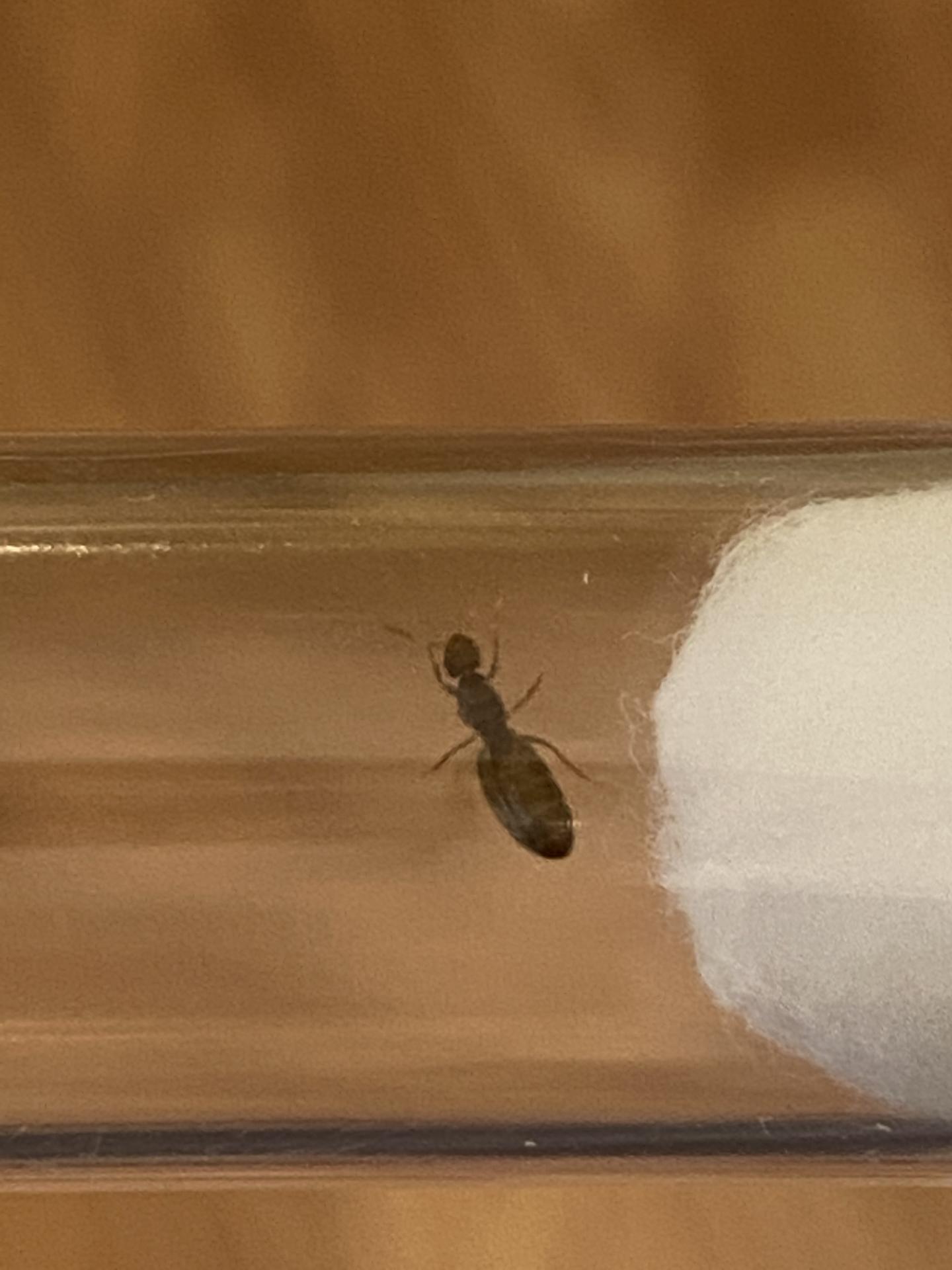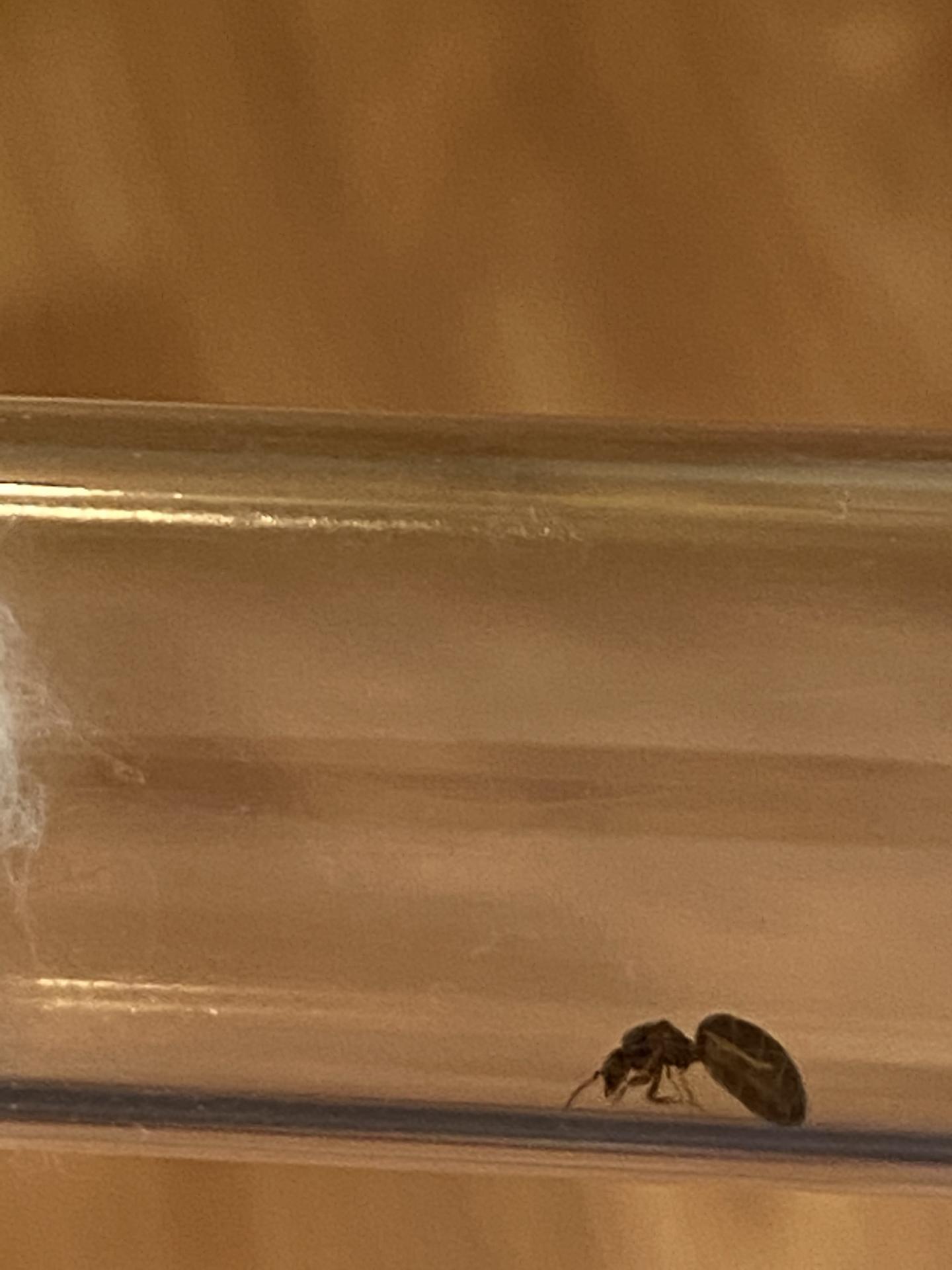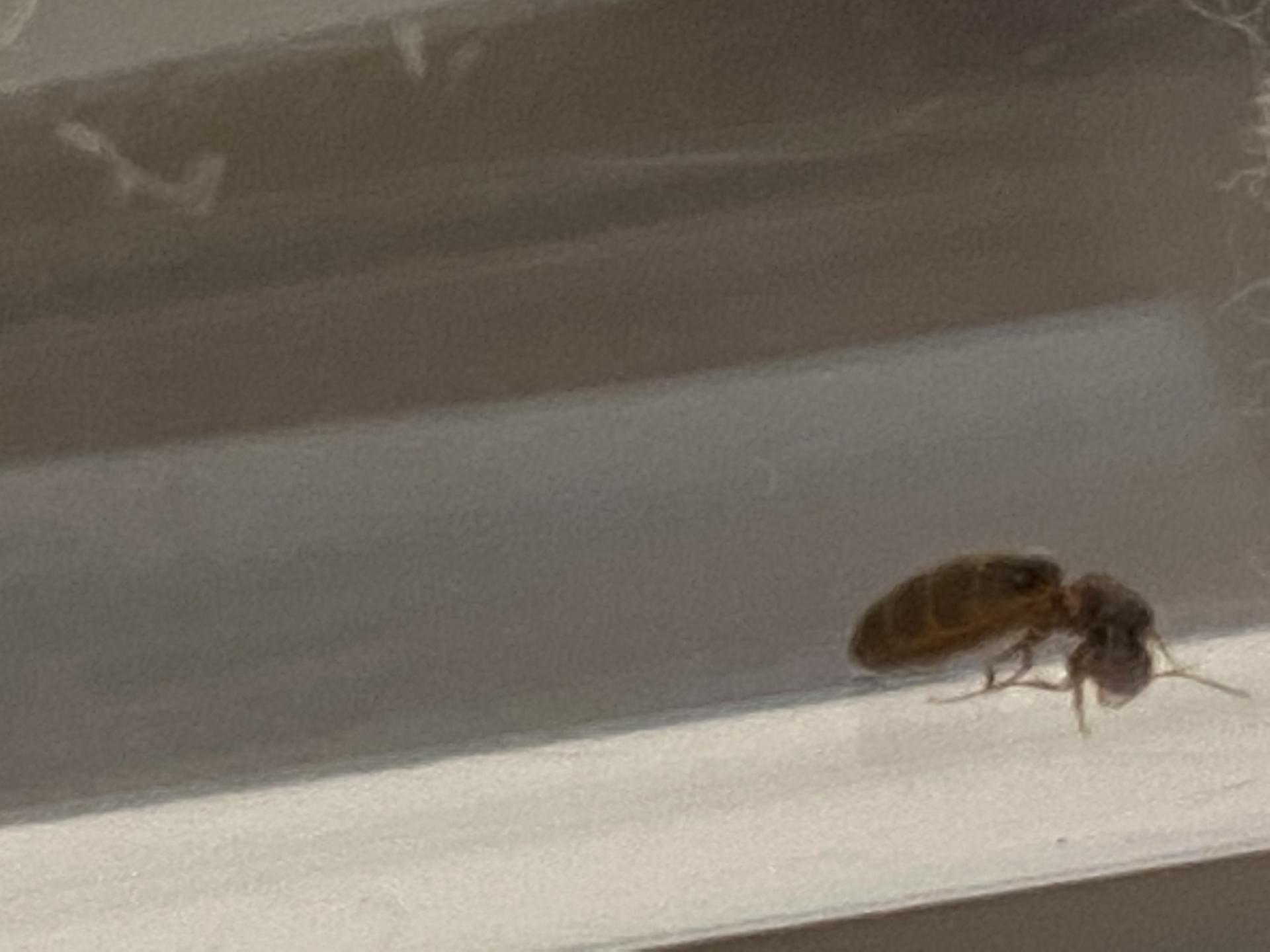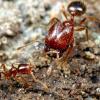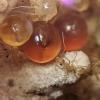1. Location (on a map) of collection: Leesburg, Florida
2. Date of collection: 09/30/2020
3. Habitat of collection: Not sure, found her crawling around in the kitchen.
4. Length (from head to gaster): 4.7-4.8mm
5. Color, hue, pattern and texture: Brown with white stripes on her gaster
6. Distinguishing characteristics: Her gaster is fat
7. Distinguishing behavior: Just sits there doing nothing
8. Nest description: N/A
9. Nuptial flight time and date: N/A






